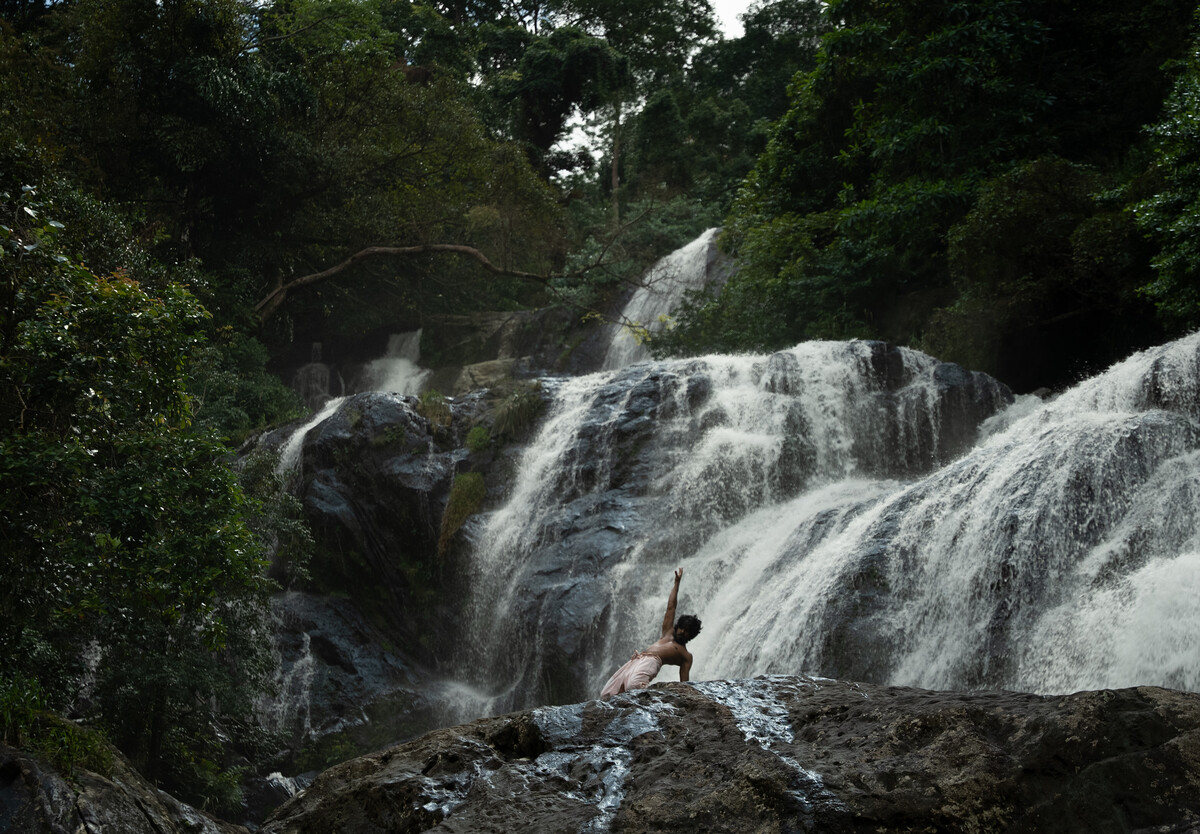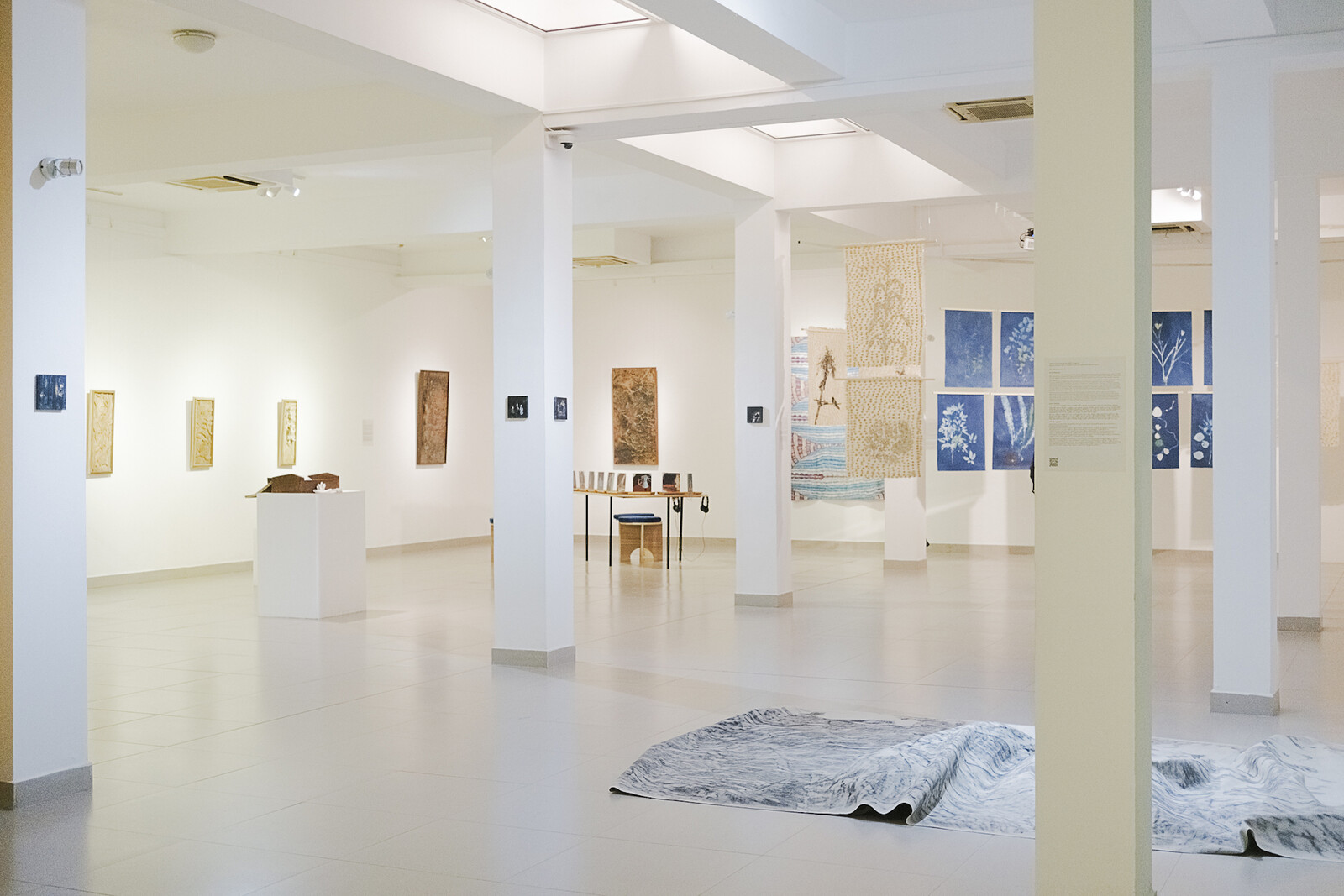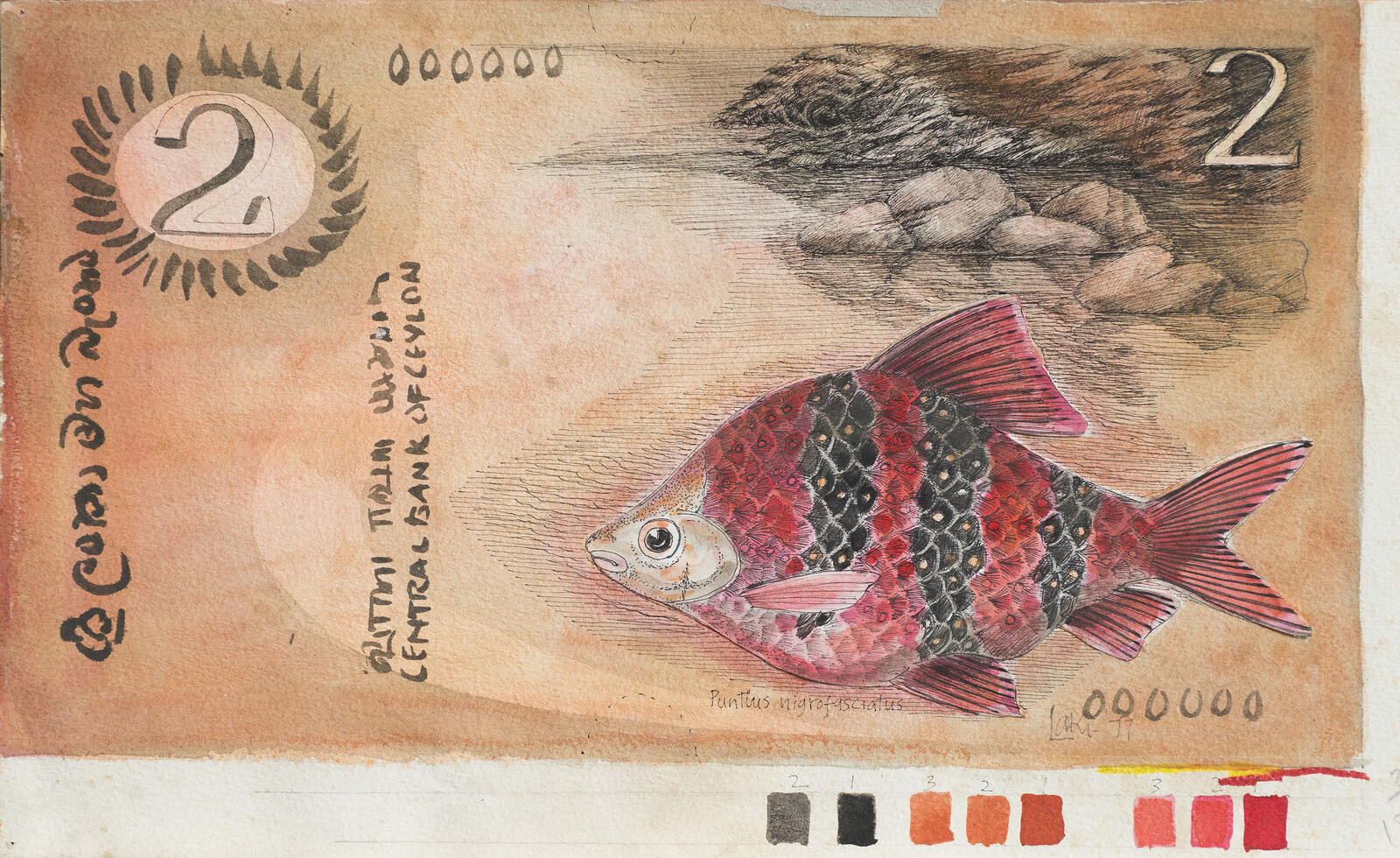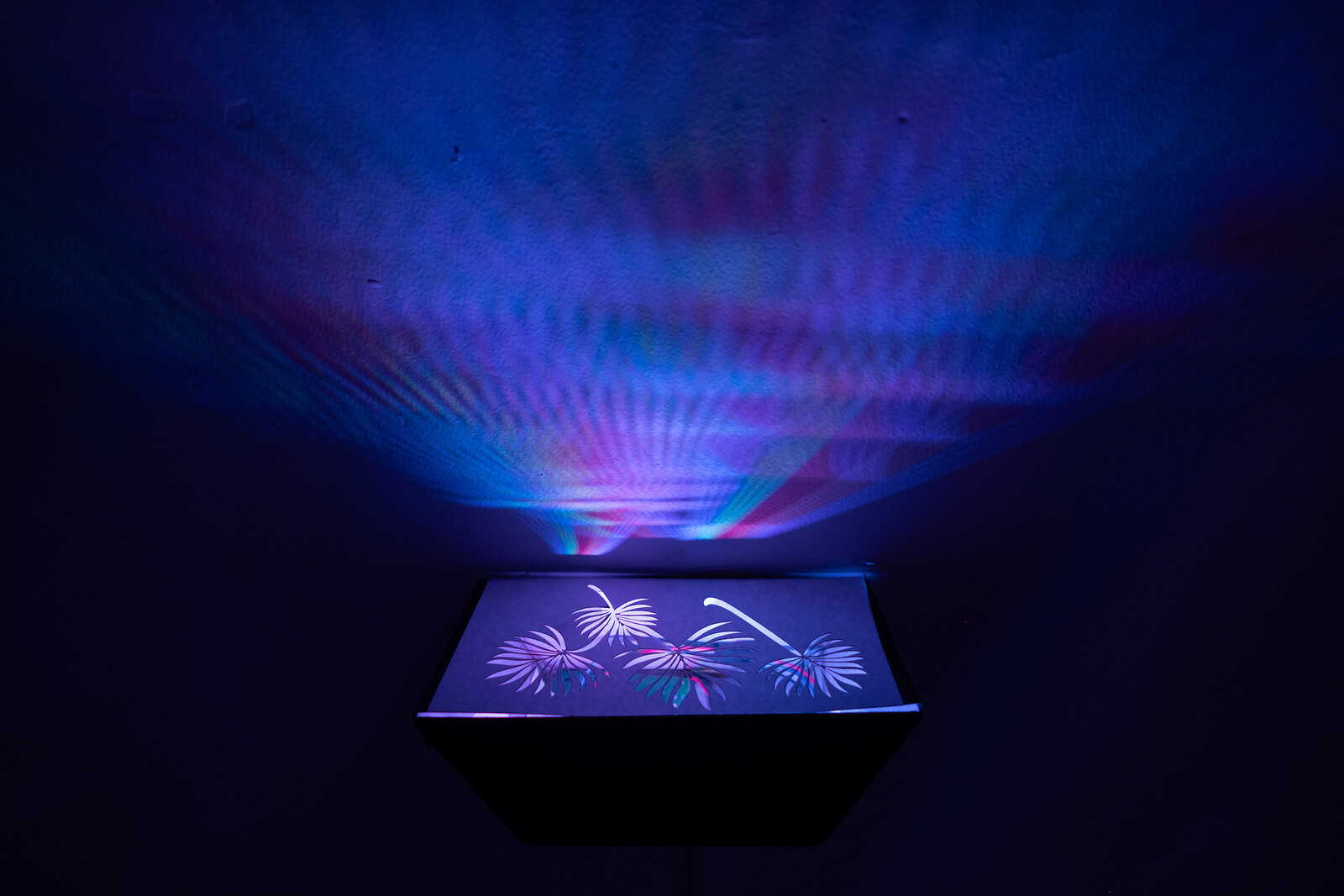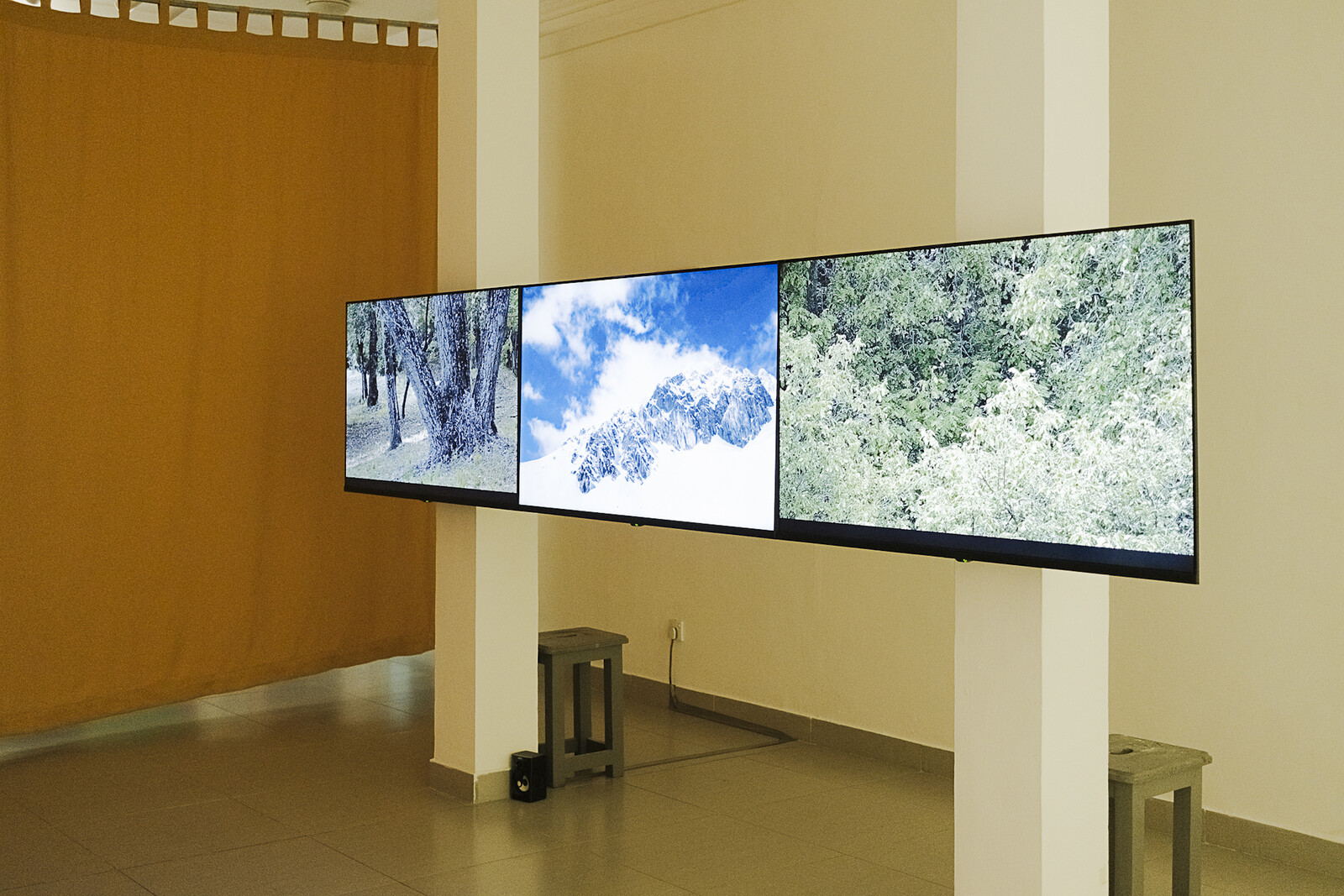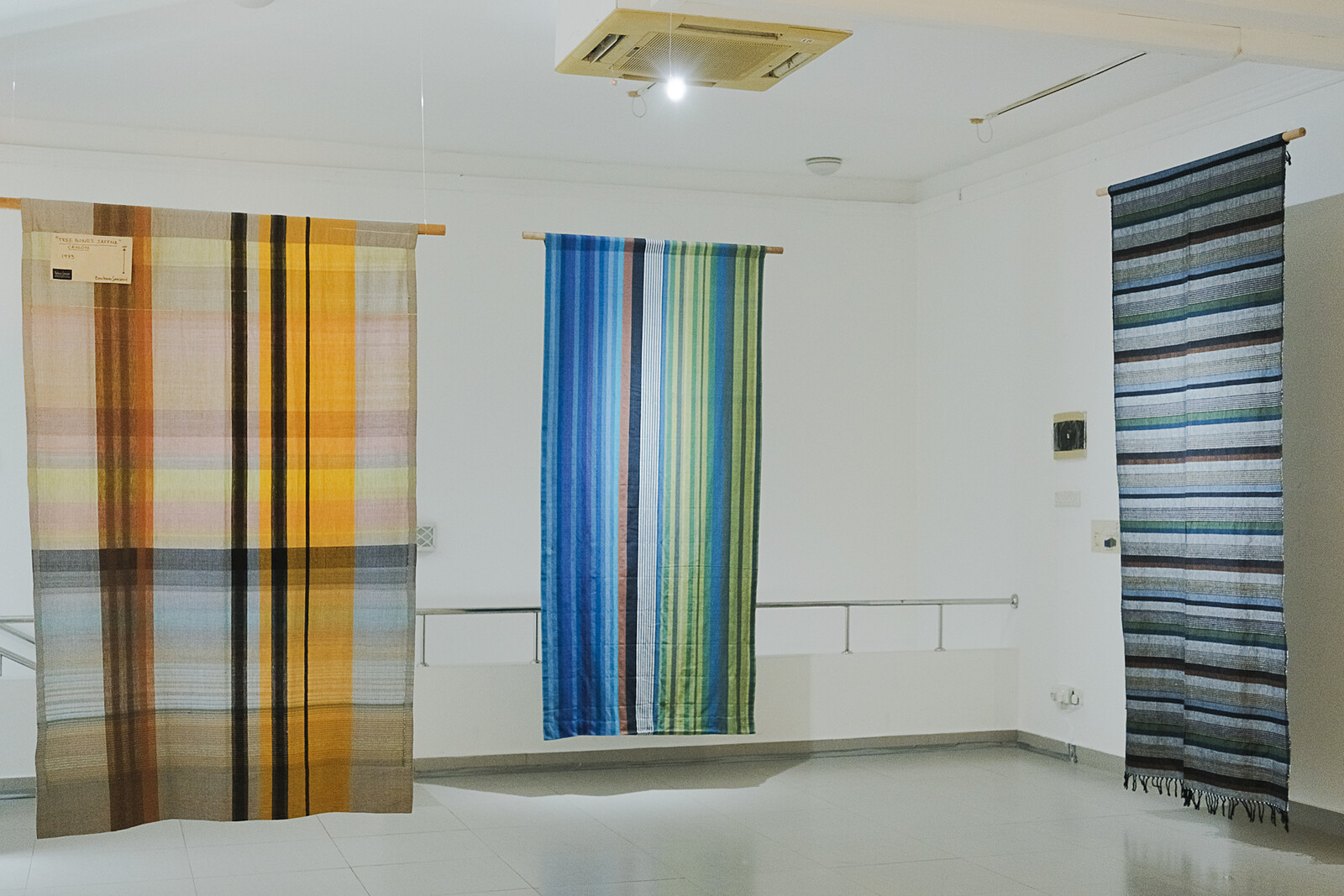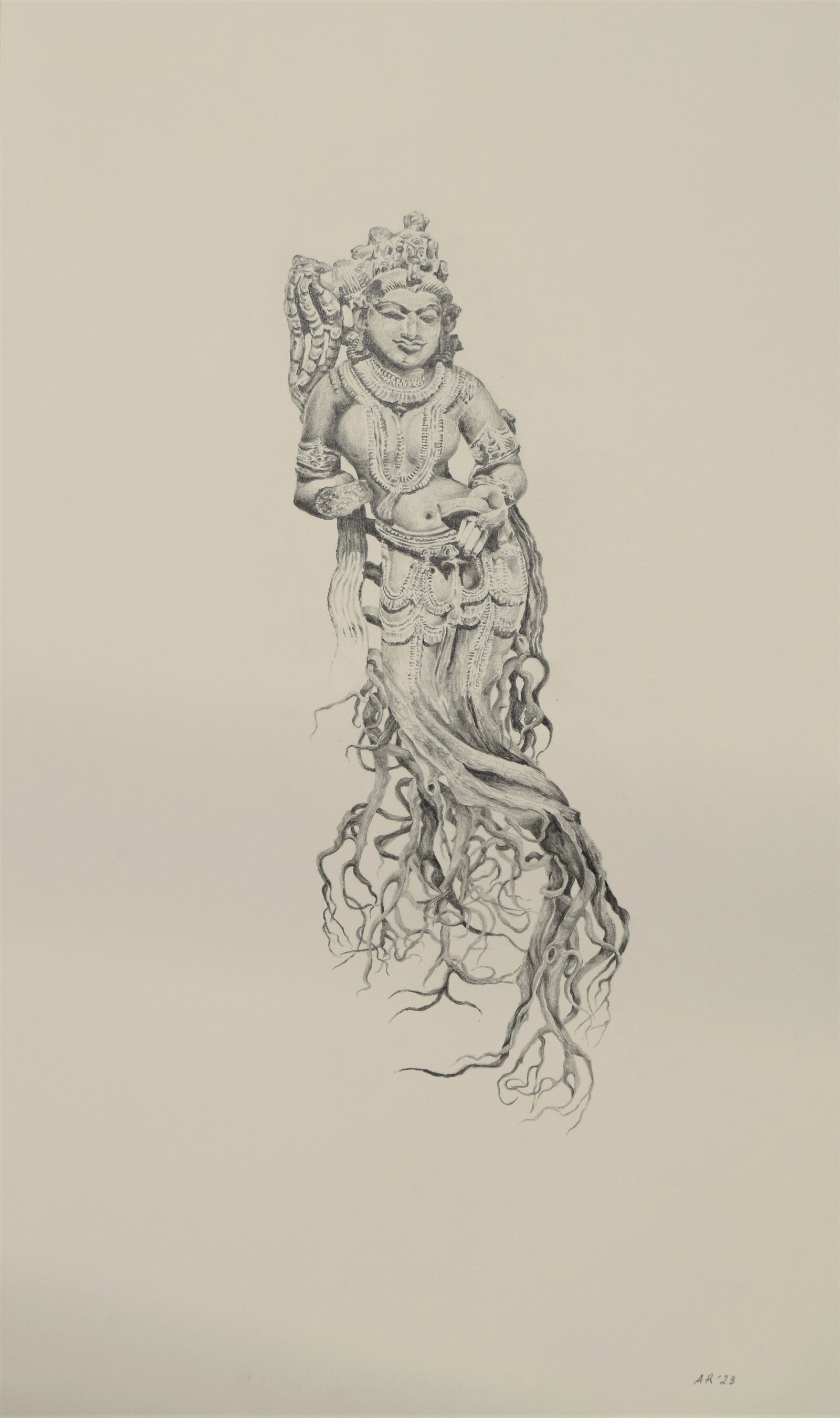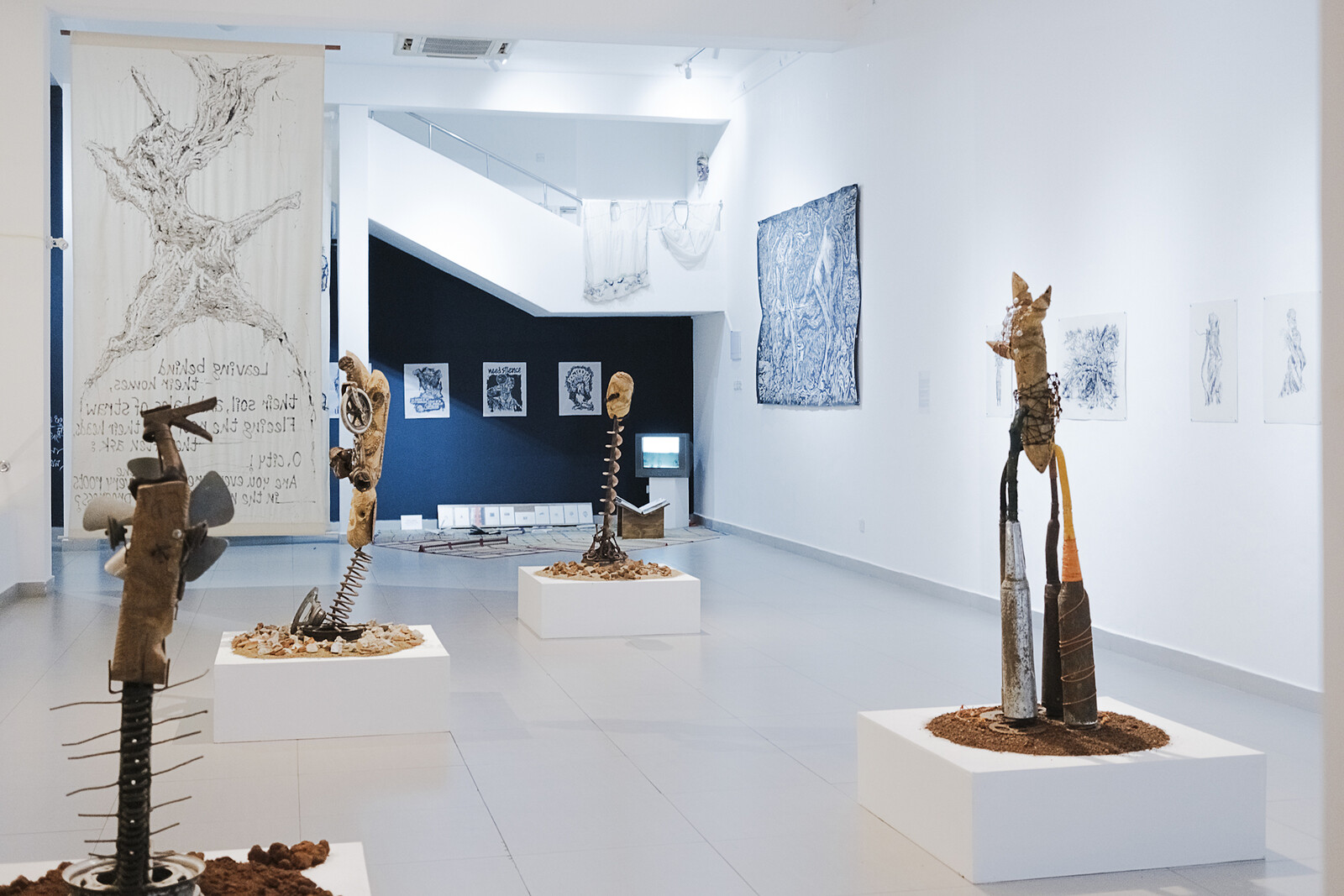“The endless symbolism of forests lies in their low visibility,” writes Anna Arabindan-Kesson, “to move through the dense entanglements of these spaces we need all our senses.”1 The same might be said of Colomboscope, Sri Lanka’s interdisciplinary arts festival now in its eighth edition. Dense, multi-sensory, and rhizomatic, it speaks through entanglements and intersections, and flows beyond exhibition spaces to wetland walks, conversations with forest gods, and other “mushroomings.”
At JDA Perera Gallery, the main exhibition space, the architecture of meaning can be perceived like a forest stratification, combining a layered verticality with dense horizontal interconnections. Suspended between the gallery’s floors, Ecophora (2023), a light installation conceived by Pankaja Withanachchi and Roshan de Selfa, connects the layers, and calls attention to our precarious relationship with visibility. Deep in the forest, only a flickering vision is possible for the human eye, which occurs when sunlight shines through trees. This phenomenon—called Komorebi in Japanese—is recalled in the artwork’s evocation of the moving luminosity of the forest, inviting the viewers to activate all their sensors.
Ecophora’s shadows almost reach the Ceylon currency made by Laki Senanayake (1937-2021). One of a wave of post-independence artists in Sri Lanka whose work crossed disciplinary boundaries, Laki’s design for the country’s currency—commissioned in 1976—moved away from the traditional depictions of great men or great architecture, instead portraying the island’s native species in their regional habitats. The exhibition shows a series of original drawings: some went into circulation, becoming “real” money; others remained art.
Colomboscope excels when categories, like these, are transcended: the project highlights the absurdity of rigid systems, activating a multi-sensorial way of thinking which offers a much-needed shift from habitual “modern” classifications. Fernando García-Dory’s video about lost environmental wisdoms lays bare the problem. It shows a conversation with Dr. Ranil Senanayake, a pioneering researcher of systems ecologies, who specialized in forest restoration. The capitalist tragedies of replacing old forest eco-systems with non-native monocultures, he explains, can be restored by learning from the forest itself. Barbara Sansoni (1928-2022), whose linear textiles are suspended near the video, translated her keen observation of Sri Lankan nature into the geometric compositions of her weavings: modern abstract designs in natural yarns. Several of the artists in Colomboscope play multiple roles in their communities: Chija Lama is a practicing monk and healer trained in the Indigenous Tamang tradition in medicine, while Subas Tamang comes from a Nepalese family of traditional stone carvers. His work incorporates diverse printmaking techniques and oral knowledge to reclaim the often erased history of Tamang community: he creates a fern spoor paper for his prints, translucent and almost immaterial. The fern’s ability to survive in hostile conditions, and detoxify the soil, becomes integral to his work.
Human-plant interdependences, mystical connections and the spirituality of the forest, are present across the show, mounting a shared call for planetary kinship and a restoration of the rights of nature. Anushka Rustomji’s hybrid interpretations of female tree spirits interweave myth and rituality, while Saodat Ismailova’s three-screen video Arslanbob (2023) evokes the ancestral, hallucinatory memories of an ancient forest. Soma Surovi Jannat journeys into the mangrove forest in Bangladesh and portrays its mythical protectors, who blend characteristics of human, animal, and marine creatures.
The venues of Colomboscope, too, have mixed identities. They function both as exhibition galleries and spaces of life, hosting conferences or night-time events, from film nights to music concerts. JDA Perera Gallery hosted workshops, including an exceptional session with Cecilia Moo, an artist of Mayan descent living in Yucatán: in collaboration with Spore Initiative, she explored the famous Florentine Codex, a complex sixteenth-century colonial manuscript assembled to document the knowledges of the native peoples of today’s Mexico. Among these were medicinal remedies based on local plants, connecting with the project’s presiding emphasis on healing and a restorative ethos as strategies of resistance. One work, in this regard, was especially striking. Pathum Dharmarathna specialized in ballet and contemporary dance before he was obliged to enrol into the Sri Lankan Air Force during the pandemic. The combat training he received has deeply affected his body and mind, and the video on show at JDA Perera Gallery represents both a healing process and an investigation into the violent impact of military protocols on the body of a dancer.
Colomboscope gives space to work from places of vulnerability, where healing is needed, searched for, and found in the forest, its waterfalls at the end of the monsoon season, its mycelium networks, its trees. As Arabindan-Kesson puts it, “The forest requires proximity, tenderness, anticipation; it demands intimacy from those who move through it.”2 In colonial texts, forests were often depicted as threat to oversight, refusing the all-over visibility colonizers desired. “The forest as a lexicon holds a plenitude of meaning across languages,” writes the artistic director, Natasha Ginwala: it’s an apt metaphor for the multi-disciplinary artistic inquiry on display in this multi-layered and intricate offering.3
Colomboscope 2024, “way of the forest” was held from 19 January through 28 January, 2024.
Elena Sorokina traveled to Colomboscope to introduce Myriam Mihindou’s performance “Black Honey Manifesto, or I am not a Foreigner in the Forest”, a project of the Initiative of Practices and Visions of Radical Care.
Anna Arabindan-Kesson, “Holding to the Forest” in COLOMBOSCOPE 2024: Way of the Forest (Sri Lanka: World Media Collective, 2024), 13.
Ibid, 14.
Ibid, 14.
